Dutch Schultz's reign on the streets of New York was marked by a lucrative bootlegging operation and violent gang wars — but it all came to an end when Murder Inc. hitmen took him out in 1935.
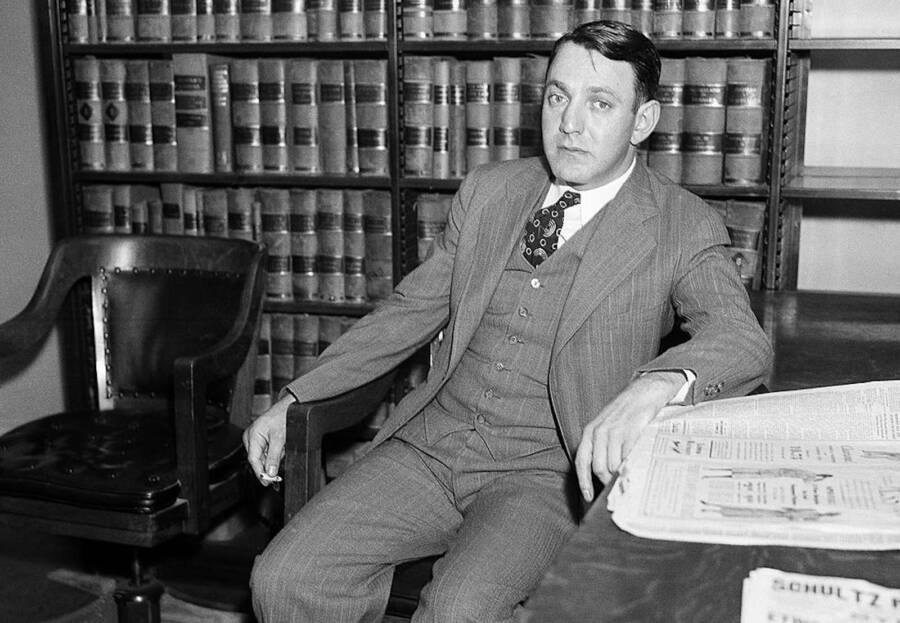
Library of CongressDutch Schultz was born Arthur Simon Flegenheimer in 1901, and he later took his nickname from another vicious gangster from the Bronx.
New York City in the 1920s and ’30s was the Wild West of organized crime. Gangs were growing in numbers while vying for control of the city’s underground, and Prohibition provided a golden opportunity for mobsters looking to get rich. You had to be ruthless to make it big — and there was perhaps no one more ruthless than Dutch Schultz.
Schultz made a name for himself early on in the Bronx, first working as a bouncer at a speakeasy. His boss, gangster Joey Noe, was impressed with Schultz’s brutality, and the two eventually became partners, opening several more illicit bars in the area. Schultz’s vicious nature proved to be a boon for their operation when the gang wars broke out — and Noe’s murder in 1928 was a tipping point that pushed Schultz over the edge.
Dutch Schultz quickly proved that he wouldn’t hesitate to eliminate anyone who posed a threat to his operations, and this allowed him to maintain tight control over his territory. Schultz’s violent enforcement tactics worked well for him in the beginning, but they also proved to be his undoing once the Commission was established and certain rules began to be enforced within the mob. Then, he became a liability.
Once Schultz threatened to murder prosecutor Thomas Dewey — who would later become the governor of New York — members of the Commission realized “The Dutchman’s” rage would bring unwanted attention. So, they took him out.
From Arthur Flegenheimer To Dutch Schultz
Dutch Schultz, born Arthur Flegenheimer to German Jewish immigrants in 1901, grew up in the slums of the Bronx. After his father abandoned the family, the impressionable young man turned to crime to make money. His violent life caught up with him, eventually, but not before leaving behind a trail of blood, mayhem, and perhaps even buried treasure.
Schultz began his criminal career with petty burglaries and theft, which led to his arrest at the age of 17. Schultz served 17 months in prison for burglary after he was caught breaking into an apartment — the only jail time he ever saw in his life.
It was soon after his release from prison that he eschewed his birth name and adopted the moniker Dutch Schultz, allegedly because he thought “Flegenheimer” was too long for newspaper headlines.
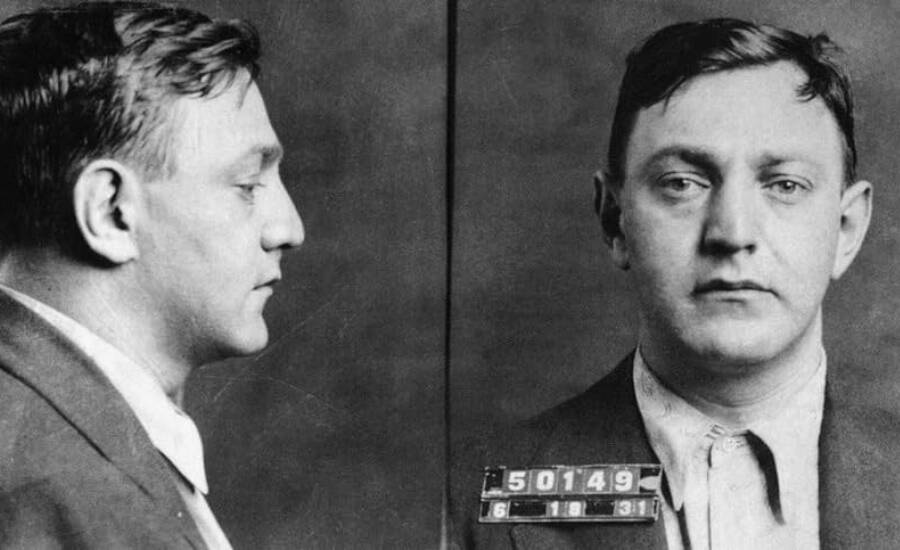
Public DomainA 1931 mugshot of 29-year-old Dutch Schultz.
Schultz’s time behind bars did nothing to quell his criminal tendencies. He returned to his previous job at a trucking company, where he began smuggling liquor and beer into New York from Canada. At the same time, he was cultivating a relationship with another gangster by the name of Joey Noe while working as a bouncer at Noe’s Hub Social Club. Noe found himself impressed by Schultz and offered to become business partners. Soon enough, the two were opening a series of underground pubs all across the Bronx before expanding into other territories.
Schultz and Noe ran into a bit of trouble with another gang of bootleggers in the Bronx, however. Brothers John and Joe Rock had their own thing going on, and they refused, at first, to buy any product from Schultz or Noe. John eventually acquiesced, but Joe remained adamant.
So, to teach him the error of his ways, Schultz and Noe allegedly kidnapped Joe Rock, beat him, and hung him by his thumbs from a meat hook. Then, they reportedly wrapped a gonorrhea discharge-soaked piece of gauze over his eyes, causing him to go blind.
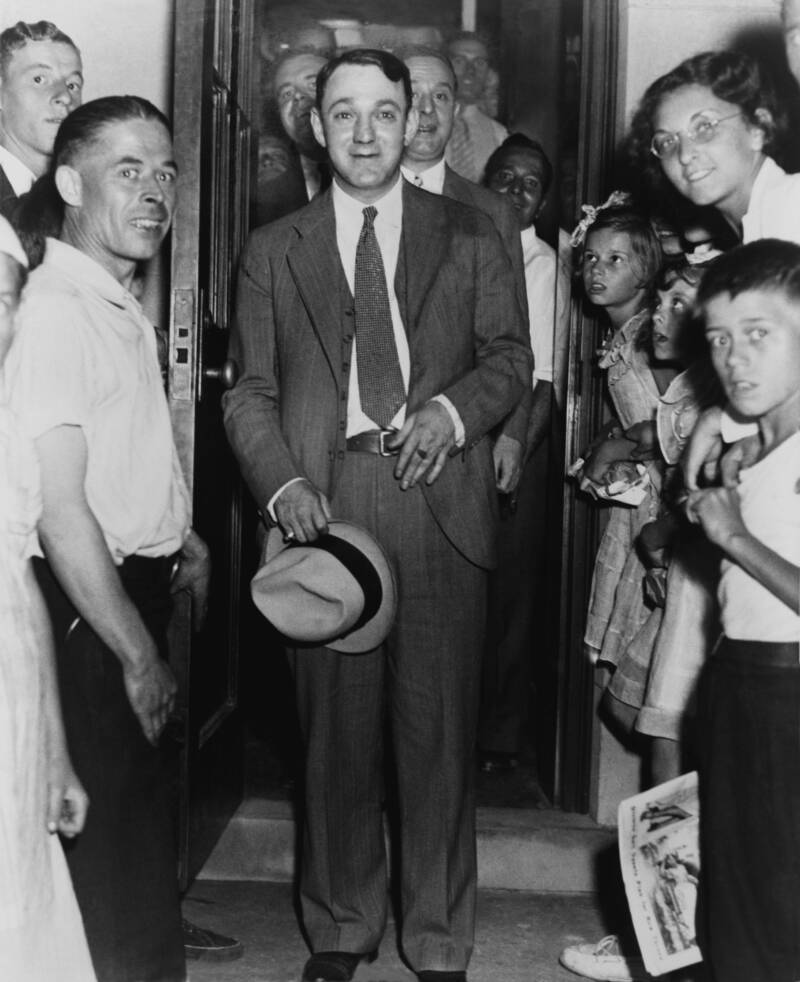
Everett Collection Historical / Alamy Stock PhotoDutch Schultz emerging from court following his second trial for federal tax evasion. 1935.
With the Rock brothers out of the way, Schultz and Noe had almost full control of bootlegging operations in the Bronx and began raking in millions of dollars every year. That kind of money didn’t go unnoticed for long.
Gang Wars Throw A Wrench In Schultz’s Operations
While Schultz and Noe’s gang had amassed tons of wealth and power, they weren’t the only ones vying for control of the New York underground. Business in the Bronx was good, but business over in Manhattan was even better. Schultz and Noe wanted a share of it.
Unfortunately, Manhattan was already a tumultuous market, with the Italian gangs that would eventually become the Five Families each making their own bids for control. Meanwhile, Jack “Legs” Diamond’s Irish Mob didn’t take too kindly to the Schultz-Noe gang moving into their territory.
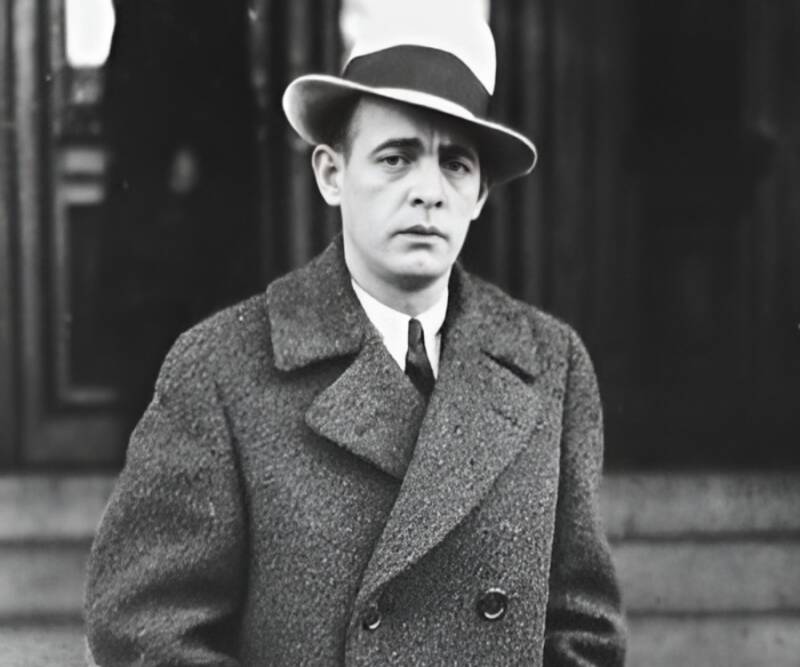
Public DomainDutch Schultz and his men fought a bloody gang war against Jack “Legs” Diamond (pictured here) that left both Diamond and Joey Noe dead.
In October 1928, The New York Times reported on a shooting that occurred outside of the Chateau Madrid night club that left Joey Noe with several bullet wounds. “While the battle was in progress,” the article read, “friends of Noe fired at least 10 shots from the windows of the night club into the blue sedan in which [Louis] Weinberg was sitting and in which, despite his bullet-proof vest, he was killed.”
Noe initially survived the attack, but his wounds ultimately became infected, and he died a month later.
Joey Noe’s death came as a particular blow to Schultz, who viewed him as both a friend and a mentor. Unsurprisingly, Schultz wanted revenge.
Just two weeks after Noe was wounded, Arnold “The Brain” Rothstein was shot at Park Central Hotel and died two days later. Some people claimed Rothstein had been killed over a gambling debt, but others suggested Schultz may have orchestrated the murder. In either case, the loss of Rothstein — who mentored Lucky Luciano, Meyer Lansky, Frank Costello, and Bugsy Siegel, among others — was a major blow to the Jewish Mob.
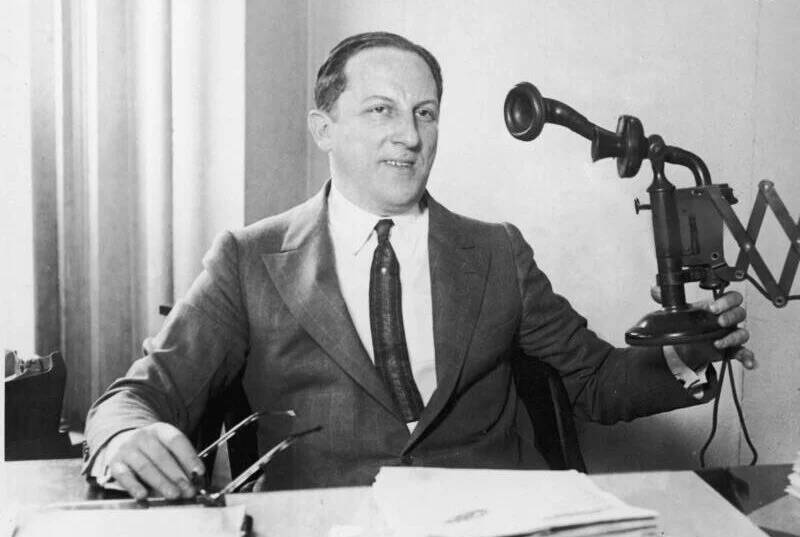
Jack Benton/Getty ImagesArnold “The Brain” Rothstein was another casualty of Dutch Schultz’s turf war.
Schultz wouldn’t get his revenge on Diamond, though, until Oct. 12, 1930, when two gunmen burst into his room at the Hotel Monticello and shot him five times. The men fled, and Diamond, still in his pajamas, stumbled out into the hallway — a feat he managed by drinking two shots of whiskey first, as he told police.
Diamond was rushed to the hospital and managed to recover from his injuries. He was released on Dec. 30, but there wasn’t much for him to return to. His gang had been effectively cast out of the city, and although Diamond tried to re-establish himself in Albany, he was gunned down for good in December 1931.
HISTORY reports that upon learning about Diamond’s death, Schultz said the mobster was “just another punk caught with his hands in my pockets.”
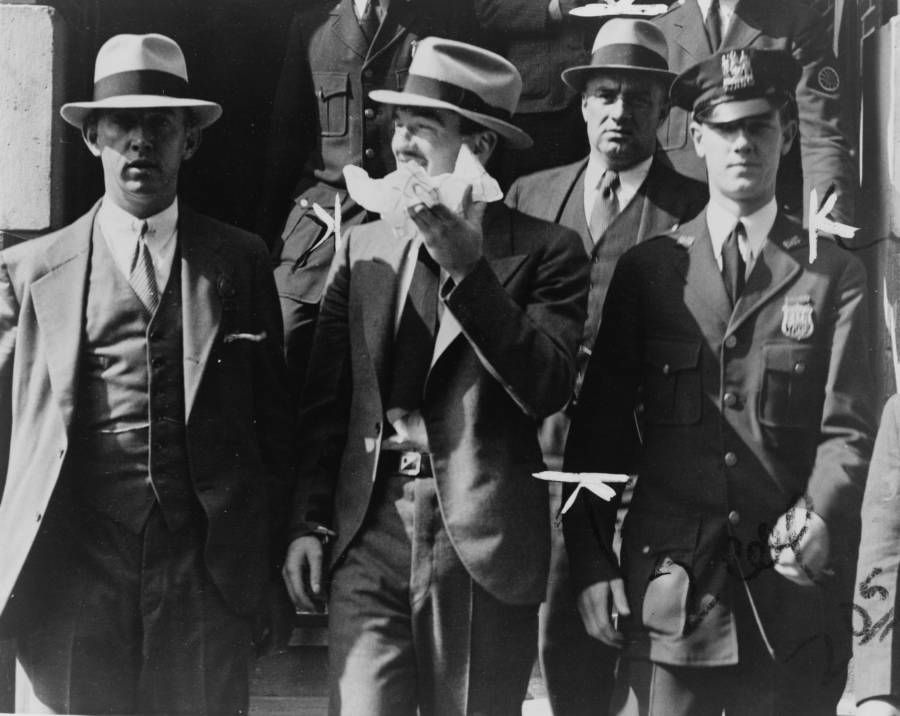
Library of CongressVincent “Mad Dog” Coll leaving court in New York. 1931.
Schultz also faced conflict among his own ranks, with one of his top enforcers, Vincent “Mad Dog” Coll, splitting off to form his own crew after Schultz refused to make him an equal partner. The result was a bloody war between Coll’s new gang and Schultz’s. Schultz eventually put a $50,000 bounty on Coll’s head, and Coll was gunned down in a phone booth on Feb. 8, 1932.
However, Schultz’s reign of terror in New York would soon come to a grisly end.
The Law Closes In On Dutch Schultz
By this point, the federal government had begun to pursue Schultz. In 1933, Schultz was indicted for tax evasion. He went into hiding at first, but in November 1934, he decided to turn himself in. He stood trial twice, but neither jury convicted him. Rather than leave well enough alone, New York’s special prosecutor Thomas E. Dewey continued to investigate Schultz, determined to bring him down on one charge or another.
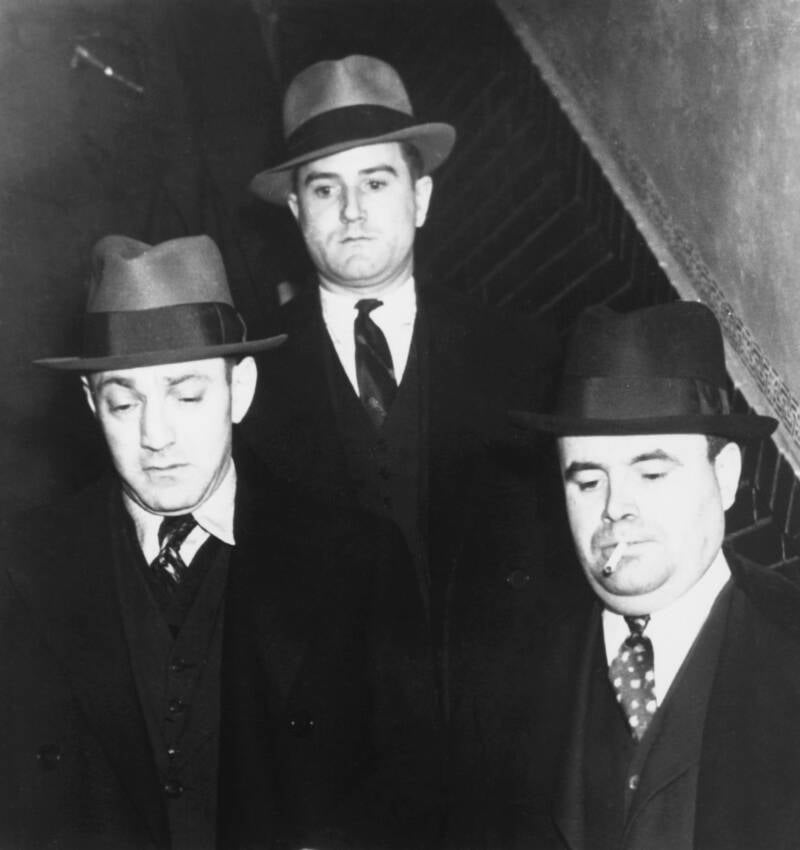
Everett Collection Historical / Alamy Stock PhotoDutch Schultz (left) leaving jail in Albany, New York, after posting bail while awaiting his trial for tax evasion.
Dutch Schultz turned his ire away from rival gangs and blamed Dewey for his business downturn instead. He approached Albert Anastasia in October 1935 about putting out a hit on Dewey. New York’s Mafia bosses didn’t like the idea. They thought it would draw too much unwanted attention to the organization. However, Schultz was steadfast in his mission and said he would make sure Dewey died anyway.
So, the mob took out Dutch Schultz before he had a chance to act.
Murder Inc. hitmen tracked Schultz to the Palace Chop House in Newark, New Jersey, on Oct. 23, 1935, and shot him in the restaurant’s bathroom.
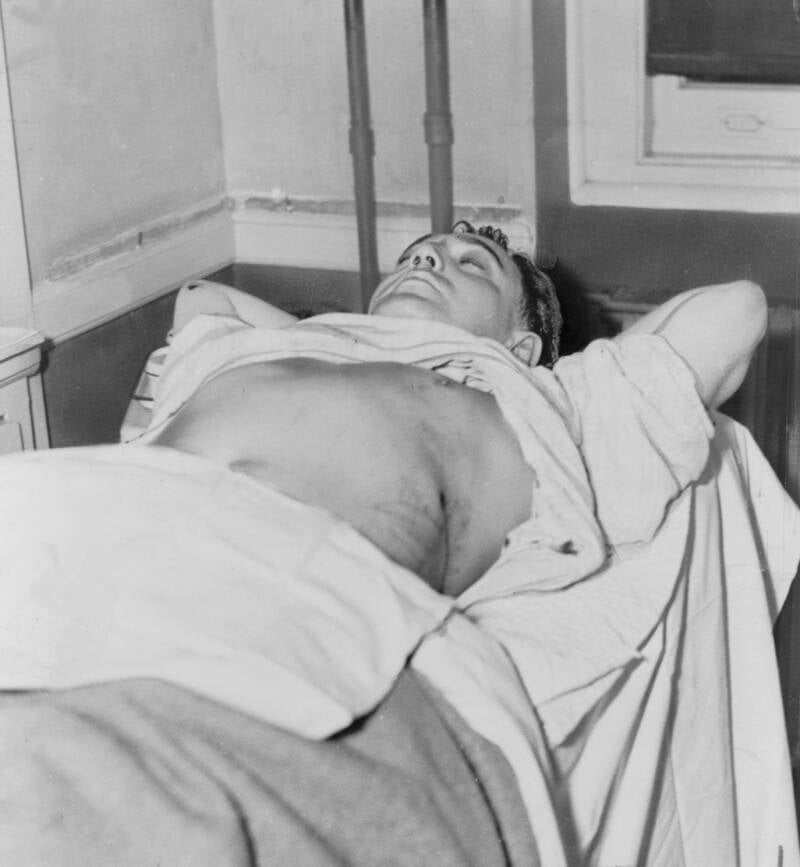
Everett Collection Historical / Alamy Stock PhotoDutch Schultz lying wounded in a Newark hospital after he was shot. He would be dead just hours later.
Even when facing death, Schultz refused to go quietly. He dragged himself out of the bathroom and slumped onto a table. At the hospital, he reportedly gave a doctor $10,000 to ensure good care.
Dutch Schultz died 22 hours after the shooting. He muttered a mostly incomprehensible statement to the police, but he claimed that he didn’t know his attackers, as The New York Times reported at the time. Allegedly, Schultz’s last words were: “Oh, oh, dog Biscuit, and when he is happy he doesn’t get snappy.” He was just 34 years old.
He left behind a girlfriend and two children, countless victims — and even supposed buried treasure. Schultz reportedly hid the equivalent of $100 million in today’s currency in cash and bonds in the Catskill Mountains near Phoenicia, New York, before his death, and it’s yet to be recovered. In this way, the notorious legacy of Dutch Schultz lives on to this very day.
After learning about the ruthless mobster Dutch Schultz, check out these facts about another notorious gangster, Al Capone. Then, read about Mickey Cohen, the Jewish-American gangster who took over Los Angeles.





